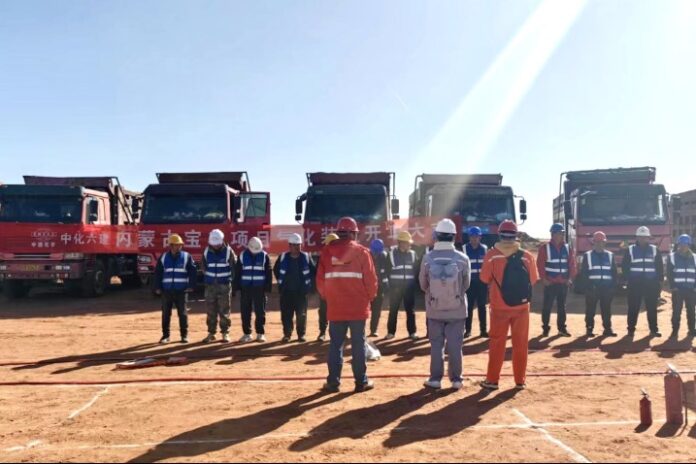Ningxia Baofeng Energy Group Co., Ltd. announced on Wednesday that it has begun the construction on the world’s first large-scale project to produce alkene – or olefin – using green hydrogen.
One of the most basic raw materials in the chemical industry, alkene is currently mainly obtained from naphtha, coal, and gas and can be used to make polyolefin and synthetic rubber – which is widely used in packaging, furniture, household appliances, automobiles and aerospace, among other fields.
With an annual alkene production capacity of 2.6 million tons from coal and 400,000 tons from green hydrogen – produced from clean energy, including solar and wind sources – it is also the world’s largest coal-to-olefin project.
Located in Ordos, in the Inner Mongolia autonomous region, the first phase of the project is expected to be completed and put into operation in 2024.
According to the release of Ningxia Baofeng Energy Group, which is a leading enterprise in the high-end coal-based new materials industry in China, the total investment in the project will amount to of 47.8 billion yuan ($7.1 billion).
The raw coal in this project – that is to be added into the methanol synthesis project unit – will be partly replaced by the green hydrogen, thus reducing carbon dioxide emissions whereas the energy consumption in the air separation unit will be reduced by adding the byproduct oxygen to the gasification unit.
It is expected that this project – compared with the pure coal option – will reduce carbon emissions by 6.31 million tons by saving 2.53 million tons of standard coal and will increase methanol production by 1.23 million tons annually.
Though one of Inner Mongolia’s main earners, the coal-chemical industry is among the mostly unprofitable sectors since its efforts to produce natural gas and alkenes by using the low-quality lignite coal available locally has proved highly expensive while the mining process damaged water sources and the environment.



